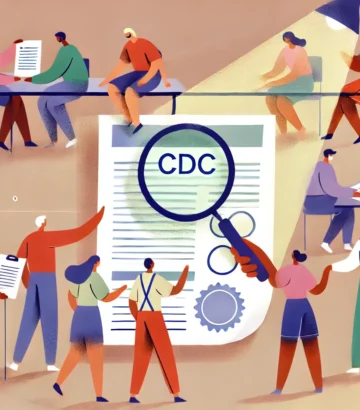Guide to Section 504 Accommodation Plan
for Students and Households who are At Risk of Serious Adverse Health Outcomes if Infected with COVID-19
Reviewed by Covid Action Group 1-9-23
This document was created by the World Health Network (WHN) School Safety Team as a resource guide for parents, guardians, educators, and students in using a 504 Plan to support safe in-person learning for individual students and families who are at risk for getting very sick with COVID-19.
Table of Contents:
- Using Section 504 Plan for Students and Households At Risk for COVID-19
- Frequently Asked Questions
- Sample 504 Plan for Child/Household Needing COVID-19 Risk Mitigations
- Sources Cited
- Addendum: Similar Types of 504 Plans for Comparison Purposes
For more information, visit WHN at [https://www.worldhealthnetwork.global/]
Using Section 504 Plan for Students and Households At Risk for COVID-19
According to major health organizations, the Section 504 Plan is an appropriate tool to use to provide equal access to education for students and households who are at risk for serious outcomes from COVID-19 infection.
In the CDC’s “Operational Guidance for K-12 Schools and Early Care and Education Programs to Support Safe In-Person Learning”, updated Oct. 5, 2022, they indicate that schools must make reasonable modifications or accommodations when necessary to ensure that all students are able to access in-person learning.
They indicate one of the tools parents and schools can use as a Section 504 plan, protected under federal and state disability laws, that require an individualized approach for working with children and youth.
The CDC states “Schools and ECE programs should also consider the needs of people who are at risk for getting very sick with COVID-19 or who have family members at risk for getting very sick with COVID-19. Some students and staff may need additional protections to ensure they can remain safely in the classroom.” [1]
A “Letter to Educators and Parents Regarding New CDC Recommendations and their Impact on Children with Disabilities” (March 24, 2022), written by the Secretary of Education, Miguel A. Cardona, Ed.D, states: “Schools must continue to take action to preserve safe in-person learning opportunities for students with disabilities, including those at high risk of severe outcomes from COVID-19.”
To comply with their Federal non-discrimination obligations under Section 504, school districts must make reasonable modifications when necessary to ensure equal access for their students with disabilities, absent a showing that the modifications would constitute a fundamental alteration or undue administrative burden to the program.
In addition, if a parent or other member of the IEP or Section 504 team believes that particular COVID-19 prevention strategies are necessary for the provision of FAPE (Free Appropriate Public Education) to the student, the team must consider whether, and to what extent, such measures are necessary, based on student-specific information.” [2]
Frequently Asked Questions:
- What is a Section 504 Plan?
Section 504 of the Rehabilitation Act of 1973 prohibits discrimination based on
disability in any program or activity that receives funding from the federal government. State public schools must comply with this federal law, which requires public schools to provide a “free appropriate public education” (FAPE) to every student with a disability—regardless of the nature or severity of the disability. Under Section 504, schools must provide students with disabilities the accommodations, aids, and services they need to access and benefit from education equally with their peers. [3]
- What is a Disability under Section 504?
Eligibility Under Section 504: Under Section 504, a person has a disability if they: (1) have a physical or mental impairment that substantially limits a major life activity; (2) have a record of such an impairment; or (3) are regarded as having such an impairment.
Major life activities include, for example, breathing and concentrating as well as major bodily functions such as functions of the immune system. A student does not need to be substantially limited in their learning to be eligible for protection and services under Section 504. If a student is substantially limited in one or more major life activities, the student would have a disability under Section 504.19 This analysis applies to all students, whether in pre-school, elementary or secondary school, or a postsecondary setting. [4]
Section 504 defines disability as a physical or mental impairment which substantially limits one or more major life activities. This definition of disability should be interpreted broadly. [5]
| Note: COVID-19 Infection puts the student and/or household at significant risk to all of the major life activities, see resources section of Sample 504 Plan. Putting the child in a building without the below mitigations constitutes an environment for the child that is not conducive to learning, and the child cannot concentrate on learning and completing assignments knowing they and/or their households are at significant risk to their health when put in such a setting without the following COVID-19 risk mitigation accommodations, see accommodations section of Sample 504 Plan. |
- What are the Parents’ Rights?
Parents Have Rights Under Section 504. The school must give parents a copy of their rights, called Procedural Safeguards, before anyone takes the first step toward evaluating a student or developing a 504 plan. They include:
– Right to Request a 504 Plan Evaluation
Anyone, including a parent or guardian, can refer a student for evaluation. A Section 504 referral should be in writing and ask that the school evaluate whether or not a student has a disability and needs accommodations, aids, and services. Schools have a special responsibility to make a Section 504 referral for every student they know or suspect may need accommodations, aids, or services.
– School Brings a 504 Team Together
The individual needs of the student determine who joins the 504 team. There are three core members of any 504 team:
1- Someone who knows the students situation—for example, a parent
2- Someone who can analyze and interpret the evaluation.
3- Someone who is knowledgeable about options at the school.
– 504 Team Evaluates
1- The 504 team will determine if a student is eligible and will decide what accommodations, aids, or services should be in place to reduce or eliminate the impact of the student’s disability on his or her education
2- The Section 504 regulations require school districts to draw upon a variety of sources in interpreting evaluation data and making placement decisions. [6]
3- A school cannot require a parent to provide a medical diagnosis to evaluate a student. However, a diagnosis can provide very helpful information for the 504 team. [5]
Formal Complaints — Discrimination and Discriminatory Harassment
If you believe the school is not following your child’s Section 504 plan or your child is experiencing discrimination or harassment, you can file a formal complaint.
Contact the U.S. Department of Education, Office for Civil Rights at 206-607-1600 (TDD: 1-800-877-8339), or visit the website, www.ed.gov/ocr
Sample 504 Plan for Child/Household Needing COVID-19 Risk Mitigations
Statement:
My child/household is at risk for serious adverse health outcomes if infected with COVID-19, and in order to manage risks so that they can concentrate on schoolwork, he/she/they require the following accommodations (see resources below for further information).
504 Criteria Met:
COVID-19 Infection puts the child and household at significant health risk, see resources section, but can be managed by the following COVID-19 risk mitigation accommodations, see accommodations section.
- My child/household is at risk for serious adverse health outcomes if infected with COVID-19.
- My child is at serious risk (1 in 4 risk) of developing long-Covid if infected with COVID-19 [7].
- Repeat infections increase this risk including the chances of organ failure and death [8].
- Even mild respiratory infections of SARS-CoV-2 could lead to neuroinflammation and subsequent brain damage [9].
- COVID-19 infection, especially with the Delta and Omicron strains, has been shown to be significantly more lethal to children and adolescents than the flu [10].
- The reasonable accommodations listed below significantly reduce the risk of COVID-19 infection, including
- improving ventilation and filtration (6-12 air changes per hour, leaning towards 12 when 6 feet distance/reduced capacity cannot be obtained) using HEPA purifiers, Corsi-Rosenthal Boxes (CR-Boxes), and/or safely opening windows,
- avoiding crowded indoor environments,
- When relying on ventilation only (no HEPAs or CR-Boxes), use a CO2 monitor (such as an Aranet) to measure ventilation of space. Open windows to keep the room below 800 ppm, and avoid indoor environments that are above recommended 800 ppm and/or provide alternative environments, and/or contact parent/caretaker.
- Allow child to wear mask, carry extra masks and sanitizer/ access to hand-washing and tissues.
- Allow flexible attendance policy with ability to make up assignments, and technologies to help stay up-to-date in lessons.
- At times when a child cannot wear a mask (i.e. while eating lunch) arrange for additional mitigations to lower risk, such as eating outdoors, opening windows indoors and/or adding HEPA purifiers or CR-Boxes to the eating area.
Resources Section:
- The World Health Organization (WHO) and Centers for Disease Control and Prevention (CDC) acknowledge the elevated risks of aerosol transmission of SARS-CoV-2 in poorly ventilated and/or crowded indoor settings, where people tend to spend longer periods of time.
- In response, international health organizations such as WHO, CDC, the WHN, the Federal Public Service (FPS) Health, Food Chain Safety and Environment of Belgium; and several independent teams of scientists have suggested guidelines and frameworks for infection control strategies using ventilation, air filtration, and air disinfection in indoor environments. These suggestions are not particular to the COVID-19 pandemic, and following them could also reduce exposures to other infectious aerosols, as well as some indoor air pollutants such as particulate matter (PM), allergens, and VOCs. [11]
- CDC’s “Operational Guidance for K-12 Schools and Early Care and Education Programs to Support Safe In-Person Learning, Strategies for Everyday Operations” states, “Schools and ECE programs should take a variety of actions every day to prevent the spread of infectious diseases, including the virus that causes COVID-19. The following set of strategies for everyday operations should be in place at all COVID-19 Community Levels1, including low levels:
- Taking steps to increase outdoor air intake and improve air filtration, such as safely opening windows and doors, including on school buses and ECE transportation vehicles, and using portable air cleaners with HEPA filters to improve ventilation. Avoid using air recirculation in school buses and ECE transportation vehicles (drivers should use vents and roll down windows when possible to improve cabin ventilation). Schools and ECE programs may also consider holding some activities outside. [1]
- Wearing a well-fitting mask or respirator consistently and correctly reduces the risk of spreading the virus that causes COVID-19. Anyone who chooses to wear a mask or respirator should be supported in their decision to do so at any COVID-19 Community Level, including low. [1]
- Washing hands can prevent the spread of infectious diseases. Schools and ECE programs should teach and reinforce proper handwashing to reduce the risk of spreading viruses, and should also provide adequate handwashing supplies, including soap,water and paper towels. If washing hands is not possible, schools and ECE programs should provide hand sanitizer containing at least 60% alcohol. Schools and ECE programs should teach and reinforce covering coughs and sneezes to help keep individuals from getting and spreading infectious diseases, including COVID-19. [1]
- Schools should provide excused absences for students who are sick, avoid policies that incentivize coming to school while sick, and support children who are learning at home if they are sick. Schools and ECE programs should ensure that employees and families are aware of and understand these policies and avoid language that penalizes or stigmatizes staying home when sick.” [1]
- Similar accommodations to those made for COVID-19 exposure have been made in the past for those with allergies and asthma, see addendum. [12]
1 CDC has introduced in 2022 the COVID-19 Community Levels to monitor the impact of COVID-19 on communities. The COVID-19 Community Levels considers three measurements that provide a better picture than the previously used Community Transmission metric of the current impact of COVID-19 while also serving as clear predictors of how the situation could change:
1- New COVID-19 hospital admissions per 100,000 population in the last 7 days, which reflects the amount of severe COVID-19 disease within the community
2- Percent of staffed inpatient beds occupied by patients with confirmed COVID-19 (7-day average), an indicator of local healthcare system usage and remaining capacity to care for patients with other medically important health issues
3- New COVID-19 cases per 100,000 population in the last 7 days, a signal of anticipated healthcare strain. An increase over a threshold of 200 cases per 100,000 population may forecast increases in new hospitalizations or inpatient beds occupied by COVID-19 patients and helps communities to implement prevention strategies accordingly.
Accommodations Section:
- Allow the student to wear their mask, carry extra masks, hand sanitizer, and/or personal air purifier during school.
- Allow CR-BOX [13] or HEPA Purifier to run in the child’s classroom, and open windows when possible, in order to achieve the recommended 6-12 air changes per hour (ACH), leaning toward 12 ACH.
- Allow CO2 monitor in the classroom, keep CO2 at below 800 ppm by having teachers open windows to air out classroom when in warning range. If windows cannot be opened run air conditioning fan from auto to on position, increase HEPA purifier/CR-BOX to highest setting (the CO2 monitor will still read high, as HEPAs or CR-Boxes do not filter out CO2 but DO filter out COVID-19 viruses, as well as other viruses and allergens, so child may remain in classroom when CO2 monitor is over 800 ppm IF HEPA air purifiers or CR-Boxes are run at levels to get 6-12 ACH. Ventilation Calculation Tool: https://www.ohcow.on.ca/covid-19/ventilation-calculation-tool/#1636724707161-69ae9142-2a76
- Allow the student to have preferential seating in the classroom (sitting near CR-BOX [13], HEPA, or near open windows)
- If the school is experiencing a high absentee rate ( 5 percent for one day or 3 to 4 percent for two or more days) [14], or if the child’s class has an absentee rate of 10% or higher, parents of child will be notified by email.
- Allow the student to use the school library as a study center during high class absenteeism, and/or lunchroom when they must be unmasked to eat/drink (or outdoors if available and appropriate).
- Allow the student to be picked up by parent during lunch hours to allow safer unmasked eating.
- Adapt attendance policies and length of school days if needed for the student and their COVID-19 risk mitigation plan.
- The student will be allowed to record teacher lectures/lessons.
- Develop a “missed class work plan” for absences, arrange for one-to-one help for new concepts that were missed, and provide adequate time for makeup work to be handed in.
- Teacher communicates with the school nurse/parent regarding trips/outings/assemblies for COVID-19 risk mitigation plan and if/when appropriate, offers virtual options as substitutions.
- Ensure that every appropriate staff member knows the health care plan for the student (teachers, nurse, admin for lunch pickup/drop offs, admin for email notification of high absenteeism in school).
- Place the student in easily controlled areas and environments for maximum engagement and involvement (areas with CR-Boxes, increased ventilation, ability to space out).
- Provide alternatives to high risk activities such as singing, shouting, blowing into instruments, or close vicinity sports/exercising, or allow students to be excused to the library or other study area.
- ______________________________________________________________________________________
______________________________________________________________________________________
Sources Cited:
[1] CDC. Community, Work, and School. Centers for Disease Control and Prevention. Published February 11, 2020. https://www.cdc.gov/coronavirus/2019-ncov/community/schools-childcare/k-12-childcare-guidance.html
[2] THE SECRETARY of EDUCATION.; 2022. Accessed January 9, 2023. https://www2.ed.gov/documents/coronavirus/letter-to-educators-and-parents-regarding-new-cdc-recommendations-03-24-2022.pdf
[3] Section 504 and Students with Disabilities OFFICE of SUPERINTENDENT of PUBLIC INSTRUCTION Equity and Civil Rights Office. https://www.k12.wa.us/sites/default/files/public/equity/pubdocs/disabilitysection504_english.pdf
[4] UNITED STATES DEPARTMENT of EDUCATION OFFICE for CIVIL RIGHTS OFFICE of SPECIAL EDUCATION and REHABILITATIVE SERVICES Long COVID under Section 504 and the IDEA: A Resource to Support Children, Students, Educators, Schools, Service Providers, and Families.; 2021. https://sites.ed.gov/idea/files/ocr-factsheet-504-20210726.pdf
[5] Section 504 and Students with Disabilities OFFICE of SUPERINTENDENT of PUBLIC INSTRUCTION Equity and Civil Rights Office. https://www.k12.wa.us/sites/default/files/public/equity/pubdocs/disabilitysection504_english.pdf
[6] U.S. Department of Education. Protecting Students With Disabilities. Edgov. Published online January 10, 2020. doi:http://www.ed.gov/about/offices/list/ocr/504faq.html
[7] Lopez-Leon S, Wegman-Ostrosky T, Ayuzo Del Valle N, et al. Long-COVID in children and adolescents: a systematic review and meta-analyses MIS-C Multisystem inflammatory syndrome ORs Odds ratios PCS Prospective cohort study PRISMA Preferred Items for Systematic Reviews and Meta-analyses RCS Retrospective cohort study rt-PCR Real-time reverse transcription-polymerase chain reaction. Published online 123AD. doi:10.1038/s41598-022-13495-5 https://www.nature.com/articles/s41598-022-13495-5
[8] Sauerwein K. Repeat COVID-19 infections increase risk of organ failure, death. Washington University School of Medicine in St. Louis. Published November 10, 2022. Accessed January 9, 2023. https://medicine.wustl.edu/news/repeat-covid-19-infections-increase-risk-of-organ-failure-death/?fbclid=IwAR3tLfAHwahbA8zn_cjgkoKG4oh7Kssl1L-qKUjOe7J9_x5YKab9-iRV1u0
[9] Venkataramani V, Winkler F. Cognitive Deficits in Long Covid-19. Phimister EG, ed. New England Journal of Medicine. 2022;387(19):1813-1815. doi:10.1056/nejmcibr2210069 https://www.nejm.org/doi/full/10.1056/NEJMcibr2210069
[10] Covid Is Way More Lethal to Kids Than The Flu. Bloomberg.com. https://www.bloomberg.com/news/newsletters/2022-06-03/coronavirus-daily-covid-is-more-lethal-to-kids-than-the-flu . Published June 3, 2022.
[11] LANCET COVID-19 COMMISSION TASK FORCE on SAFE WORK, SAFE SCHOOL, and SAFE TRAVEL | 1 the Lancet COVID-19 Commission Task Force on Safe Work, Safe School, and Safe Travel Proposed Non-Infectious Air Delivery Rates (NADR) for Reducing Exposure to Airborne Respiratory Infectious Diseases.; 2022. Accessed January 9, 2023. https://covid19commission.org/s/Lancet-Covid-Commission-TF-Report-Nov-2022.pdf
[12] Bateman D. 504 Accommodations Guide. Penn. State Education Association. https://www.psea.org/contentassets/ac6695903bd94d27aa14e85c3a12d90e/504-accommodations-guide.pdf
[13] Derk RC, Coyle JP, Lindsley WG, et al. Efficacy of Do-It-Yourself air filtration units in reducing exposure to simulated respiratory aerosols. Building and Environment. 2023;229:109920. doi:10.1016/j.buildenv.2022.109920 https://www.sciencedirect.com/science/article/pii/S0360132322011507
[14] When Should Flu Trigger A School Shutdown? ScienceDaily. https://www.sciencedaily.com/releases/2009/11/091104152302.htm
Addendum: Similar Types of 504 Plans for Comparison Purposes
The 504 Plan and accommodations for COVID-19 Risk Accommodations above are very similar to those commonly approved for students with asthma.
Excerpted from: https://www.psea.org/contentassets/ac6695903bd94d27aa14e85c3a12d90e/504-accommodations-guide.pdf
504 Accommodations Guide
SAMPLE ASTHMA 504 Plan
Example: A student has been diagnosed as having mild or severe asthma. Asthma is a respiratory condition marked by spasms in the bronchi of the lungs, causing difficulty in breathing. Because the student has difficulty breathing, their participation in physical activities outside and inside the classroom should be limited. Depending on the level of severity of the student’s asthma, the school staff should determine if the student can participate in activities involving physical activity.
Resources:
• https://www.aafa.org/managing-asthma-in-school/
• https://ajph.aphapublications.org/doi/full/10.2105/AJPH.94.7.1102 • https://getasthmahelp.org/schools-main.aspx
Accommodations:
- Develop a “missed class work plan” for absences, arrange for one-to-one help for new concepts that were missed, and provide adequate time for makeup work to be handed in.
- Adapt attendance policies and length of school days if needed for the student and their medical needs
- Teacher communicates with the school nurse/parent regarding trips/outings for medication administration arrangement
- Meet with the school nurse to learn about the signs of an asthma crisis and the student’s emergency/health care plan. Additionally, learn how to dispense the child’s medications and monitor for side effects
- Allow the student to meet with the school nurse to review triggers, schedule of inhalers, crisis plan, how to recognize the symptoms of a crisis
- Ensure that every appropriate staff member knows the health care plan for the student
- Provide inhalant therapy assistance to the student if needed
- Remove any allergens from the classroom that might cause trouble with breathing
- Adapt activity level to make sure that the student is able to participate in games during
recess and physical education - Ensure that field trips that might cause trouble breathing are not mandatory and
supplement this requirement with virtual tours, videos, movies - Adapt curriculum so that student can learn to the best of their ability without causing
breathing problems throughout it - Provide student with rest periods during physical activity or any rigorous activity that
would get the heart beating faster to ensure that the student is not having trouble
breathing - Have peers available to carry materials that might be too heavy leading to troubles in breathing; such as the students backpack, lunch tray, books, or other materials
- Have locker or cubby in an appropriate area that the student does not need to walk far to get to each class
- Place the student in easily controlled areas and environments for maximum engagement and involvement
- Allow the student to have unlimited access to water and use of the restroom (due to medication use)
- Allow the student to say indoors during cold weather and/or poor air quality days
- Allow the student to carry their asthma medication during school
- Allow the student to have preferential seating in the classroom (not sitting near
chalkboard/near open windows) - Ensure that the student has immediate access to medications at all times
- Have allergen free tables at lunch available for the student











